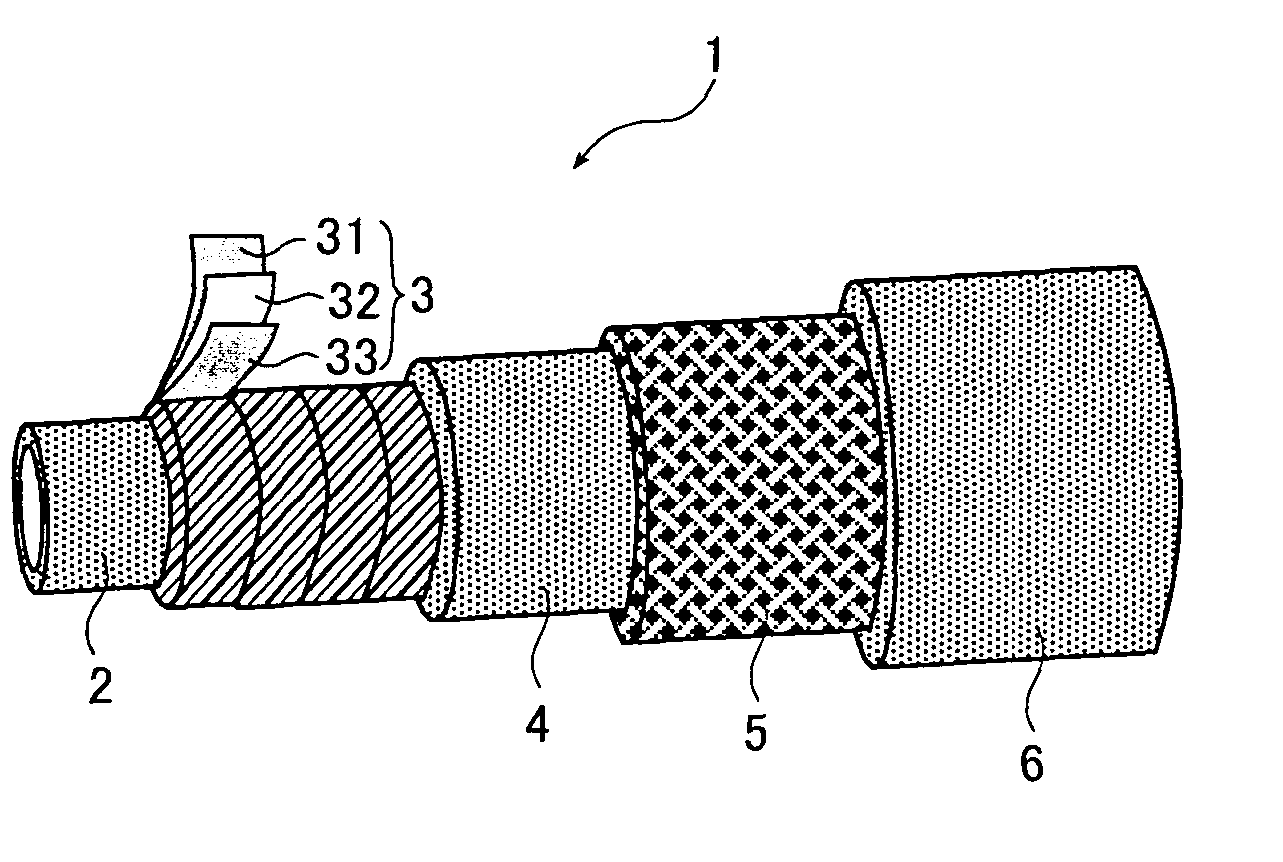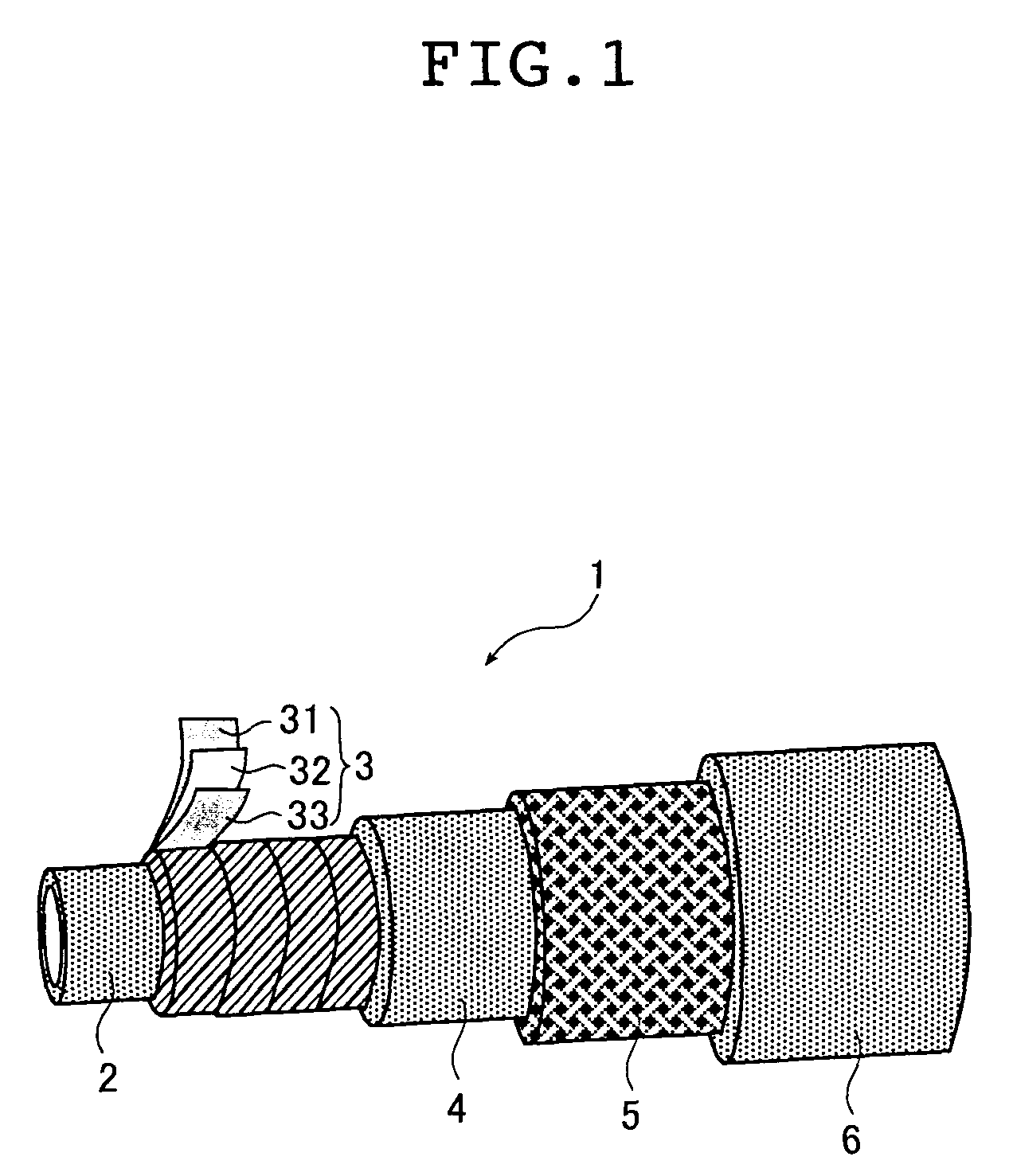Ultra-low permeation hose and method of manufacture
a technology of permeation hose and hose body, which is applied in the direction of layered products, mechanical equipment, chemical equipment and processes, etc., can solve the problems of hoses being particularly unsuitable, refrigerant to leak out, and inability to conform to rubber hoses, etc., and achieve excellent gas permeation resistance, excellent adhesion, and excellent resistance to refrigerant permeation
- Summary
- Abstract
- Description
- Claims
- Application Information
AI Technical Summary
Benefits of technology
Problems solved by technology
Method used
Image
Examples
example 1
[0122] The nylon 6 serving as the innermost layer resin was extruded about the outer periphery of a 6 mm diameter mandrel from an extruder having a crosshead die for resin, thereby forming an innermost layer having a thickness of 0.2 mm. A phenolic adhesive was then applied to the extruded resin layer and the laminated film A was spirally wound in a half-wrap arrangement--that is, so that each turn of the film overlapped the underlying turn by one-half of the film width--on top while applying phenolic adhesive thereto, in this way forming a refrigerant barrier layer having a thickness of 0.2 mm.
[0123] The HNBR rubber composition serving as the inner tube rubber composition was then extruded over the refrigerant barrier layer using an extruder having a crosshead die for rubber, thereby forming an inner tube outer layer having a thickness of 1.6 mm. A reinforcement made of aramid yarn was braided (1500 d, 80 yarns) over the inner tube outer layer so as to form a reinforcing layer. The...
PUM
| Property | Measurement | Unit |
|---|---|---|
| Elongation at break | aaaaa | aaaaa |
| Temperature | aaaaa | aaaaa |
| Strength | aaaaa | aaaaa |
Abstract
Description
Claims
Application Information
 Login to View More
Login to View More - R&D
- Intellectual Property
- Life Sciences
- Materials
- Tech Scout
- Unparalleled Data Quality
- Higher Quality Content
- 60% Fewer Hallucinations
Browse by: Latest US Patents, China's latest patents, Technical Efficacy Thesaurus, Application Domain, Technology Topic, Popular Technical Reports.
© 2025 PatSnap. All rights reserved.Legal|Privacy policy|Modern Slavery Act Transparency Statement|Sitemap|About US| Contact US: help@patsnap.com


